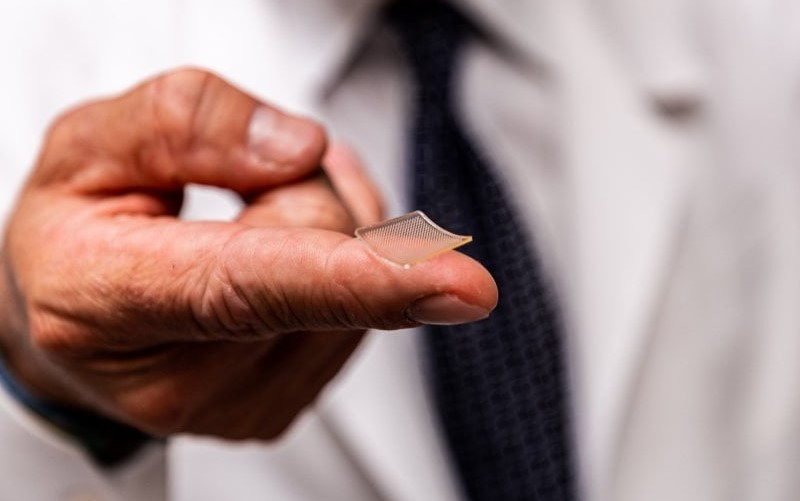The vaccine for the novel coronavirus might be as simple as a patch that is the size of a finger-tip. University of Pittsburgh School of Medicine scientists announced a potential vaccine against SARS-CoV-2, the new coronavirus causing the pandemic.
Thanks to 400 micro punctures delivered by very thin needles placed on a 1.5 cm wide patch on the arm or shoulder, immunity to the SARS-CoV-2 virus can develop within two weeks, to reach a level within another 3-4 weeks enough antibodies to decisively fight the virus.
The vaccine was first tested on mice and it reacted in a promising way producing antibodies specific to SARS-CoV-2 at quantities thought to be sufficient to neutralizing the virus.
In April 2nd in eBioMedicine a paper published by The Lancet appeared becoming the first to be published after critique from fellow scientists from other institutions that describes a candidate vaccine for COVID-19.
Scientist took to coming up with a vaccine based on data accumulated from past ground work on coronavirus epidemics.
“We had previous experience on SARS-CoV in 2003 and MERS-CoV in 2014. These two viruses, which are closely related to SARS-CoV-2, teach us that a particular protein, called a spike protein, is important for inducing immunity against the virus. We knew exactly where to fight this new virus,” said co-senior author Andrea Gambotto, associate professor of surgery at the Pitt School of Medicine.
Read also: Coronavirus: First vaccine volunteer Ian Haydon says he has a lot of faith in the project
“That’s why it’s important to fund vaccine research. You never know where the next pandemic will come from.”
Co-senior author Louis Falo, professor and chair of dermatology at Pitt’s School of Medicine and UPMC said, “Our ability to rapidly develop this vaccine was a result of scientists with expertise in diverse areas of research working together with a common goal,”
The vaccine described in the paper comes up showing a similarity to the current flu immunity build up.
The researchers also used a novel approach to deliver the drug, called a micro needle array, to increase potency. This array is a fingertip-sized patch of 400 tiny needles that delivers the spike protein pieces into the skin, where the immune reaction is strongest.
The patch goes on like a Band-Aid and then the needles—which are made entirely of sugar and the protein pieces—simply dissolve into the skin.

Read also:Coronavirus cases in Germany top 100,000 as death toll continues to rise
This model design was developed to build on the idea of the small pox vaccine to the skin but was of a more high tech version that is more efficient and reproducible from patient to patient.
Falo assured that the patch is very similar to Velcro and pretty painless and that testing the vaccine on human subjects could take maybe more than a year or longer. This is because of the magnitude of damage the COVID-19 has and its high contact rate of transmission.
